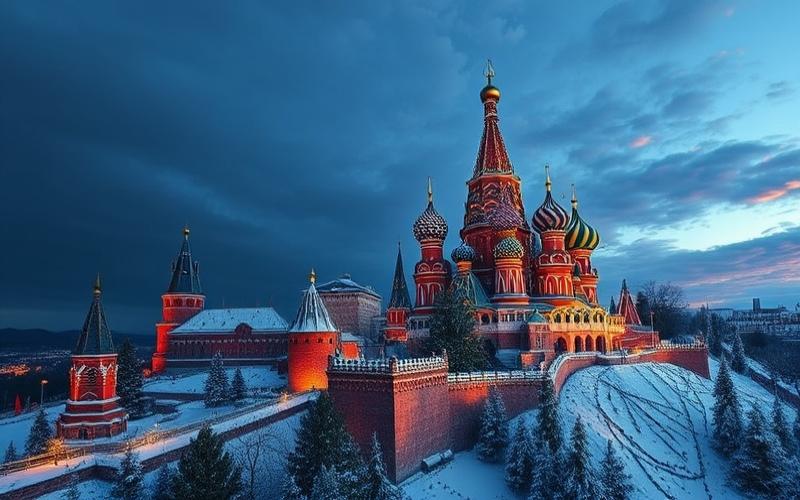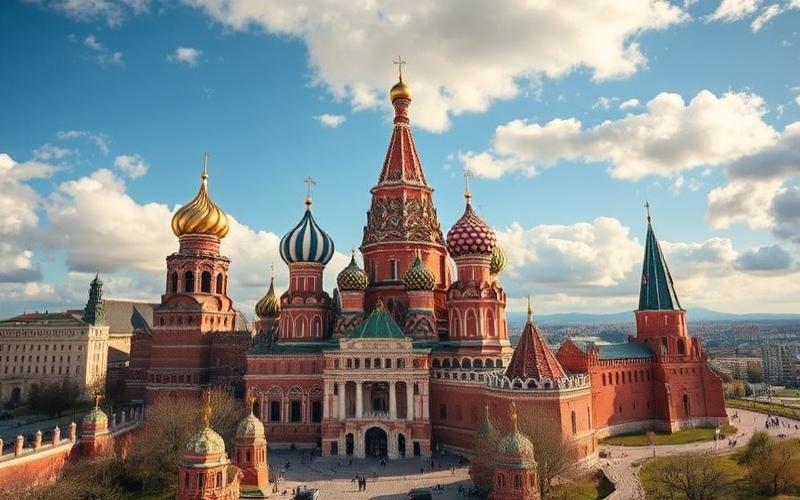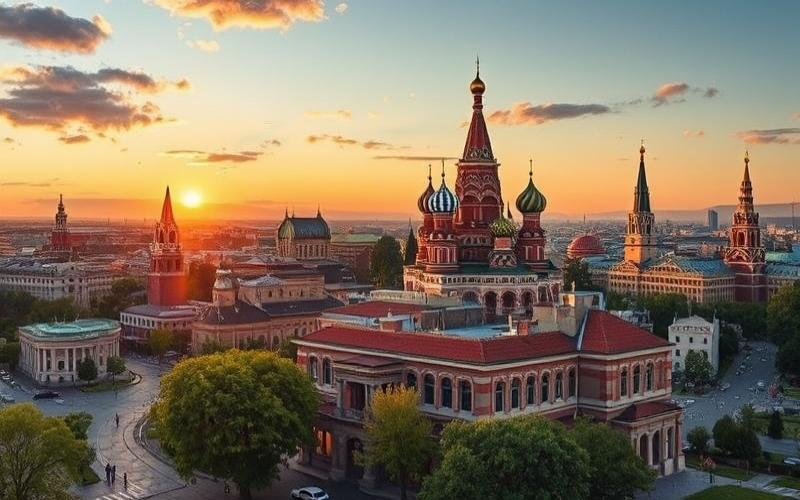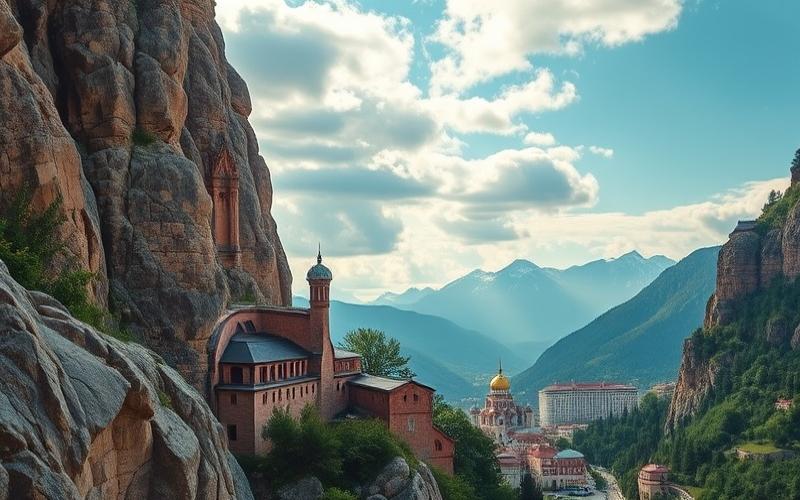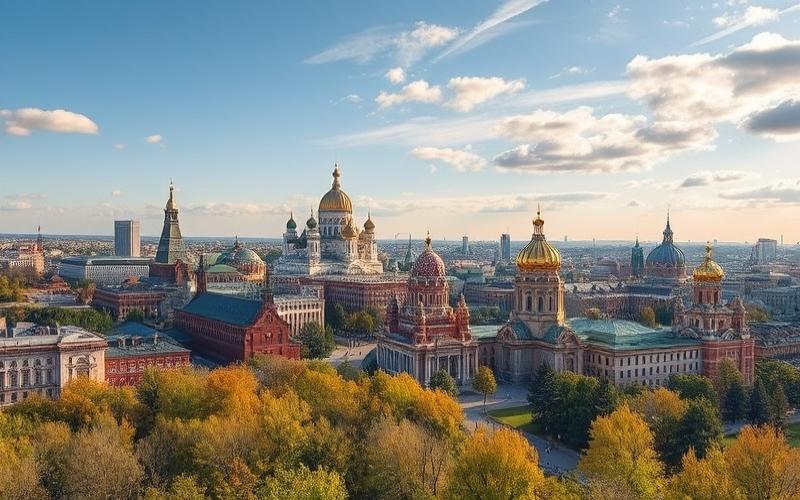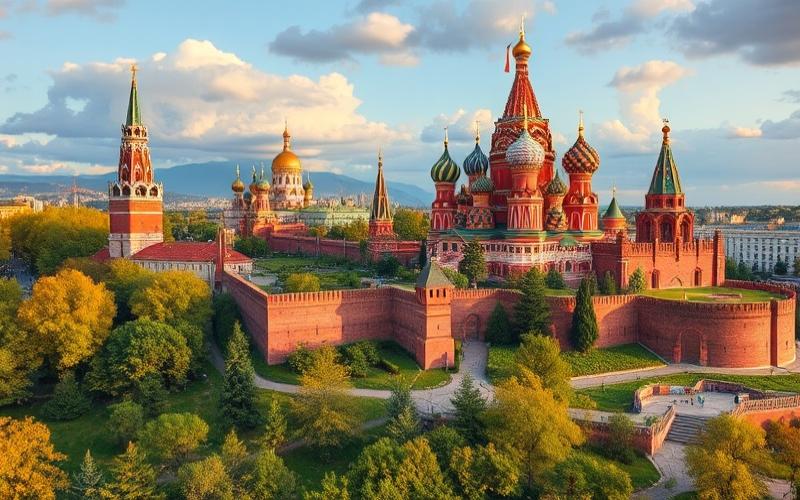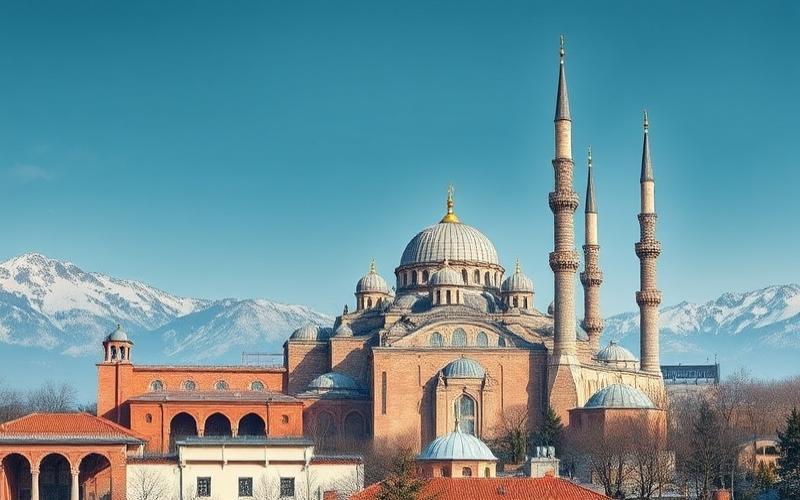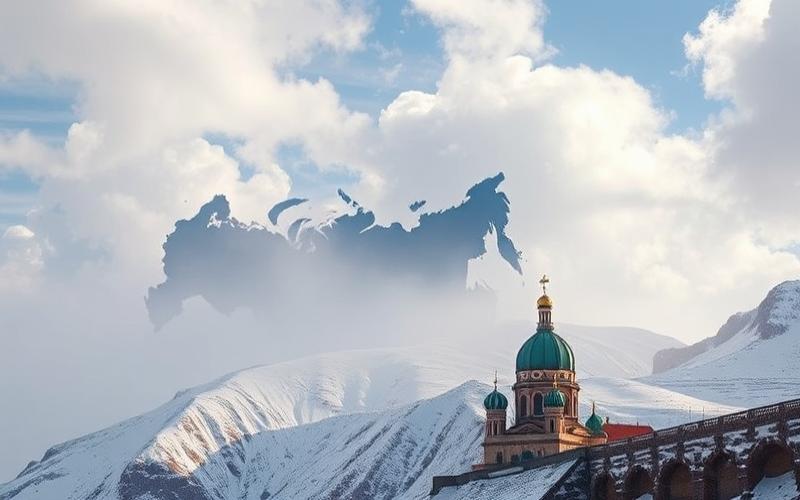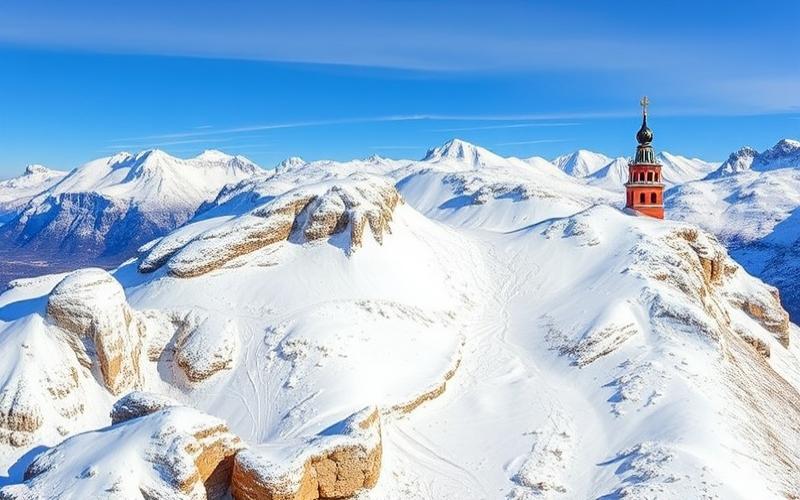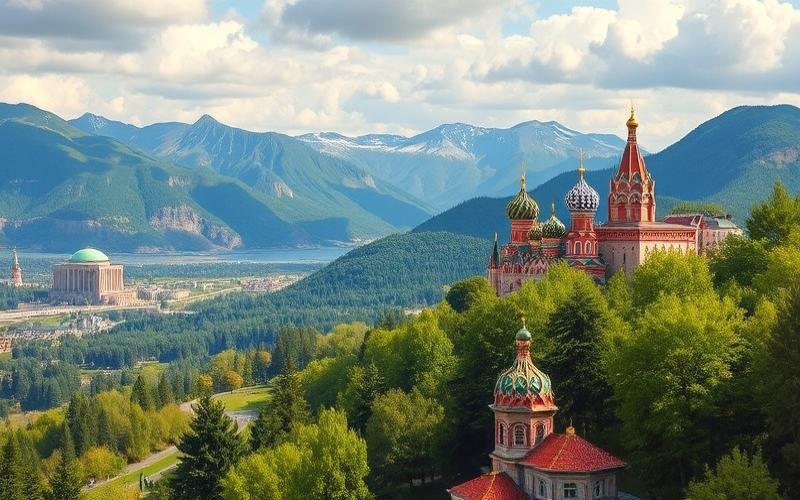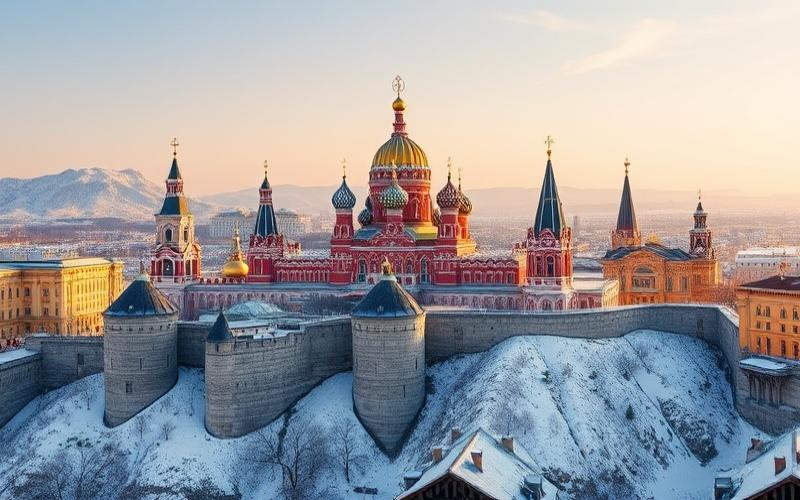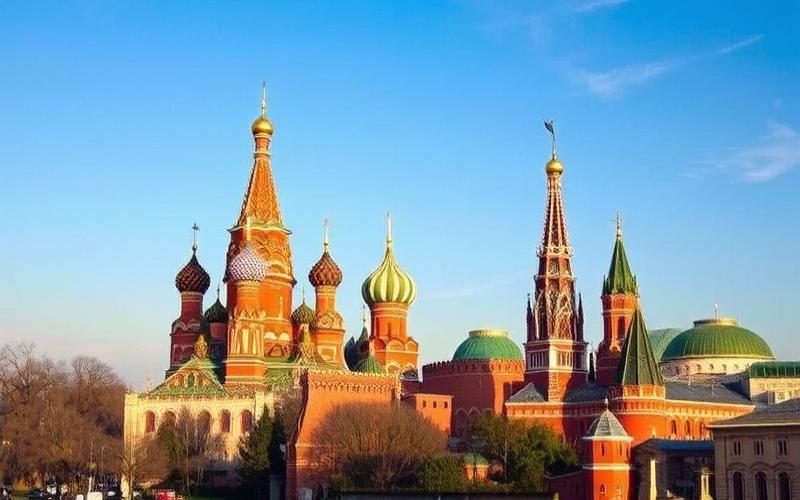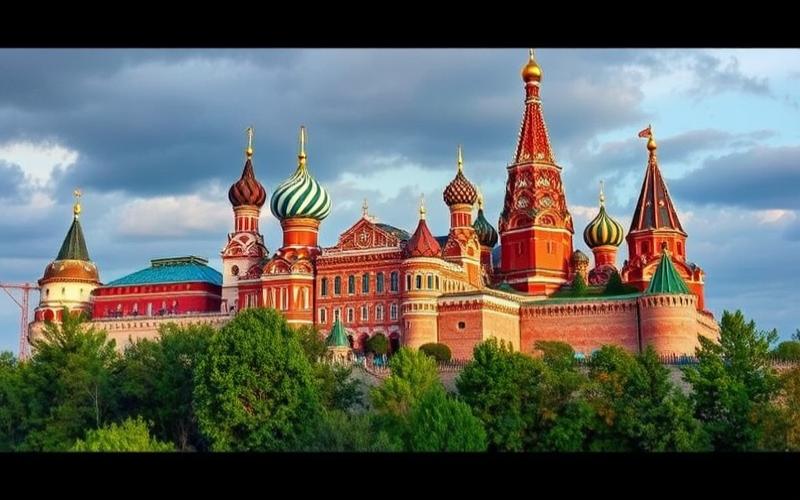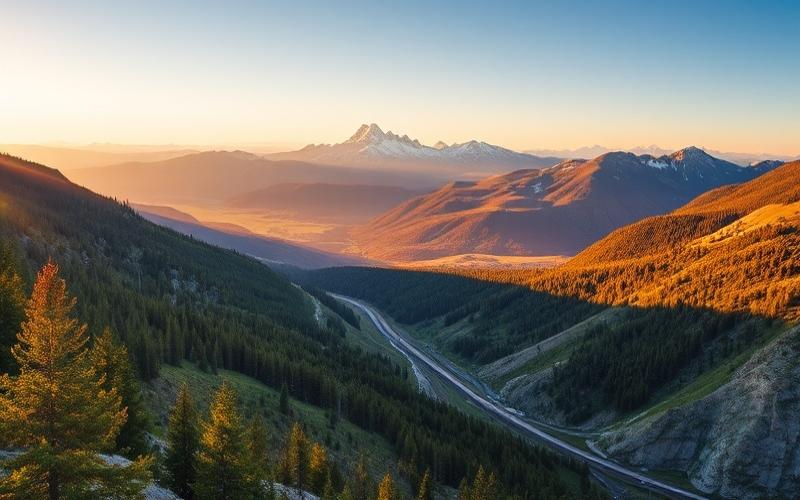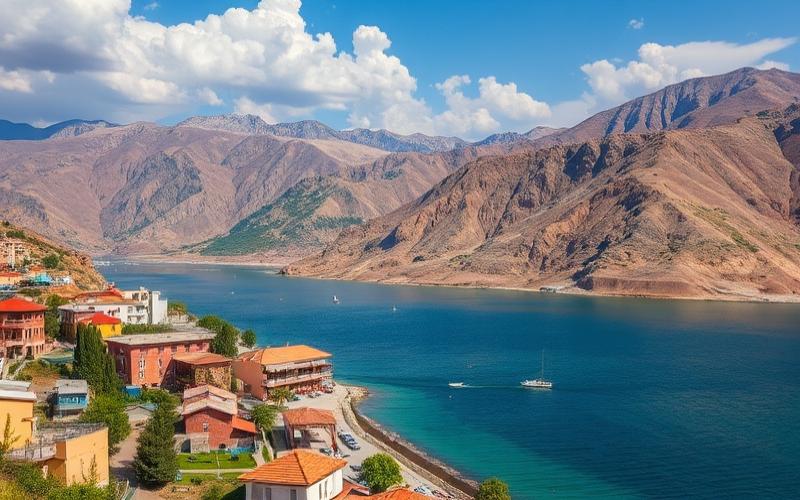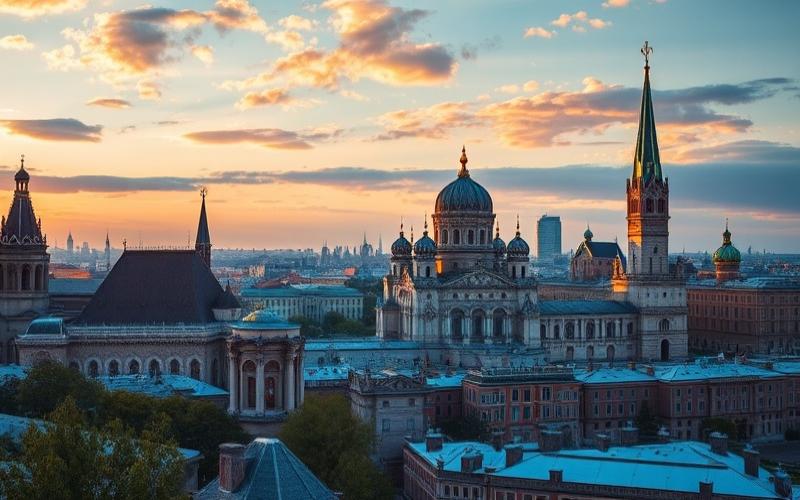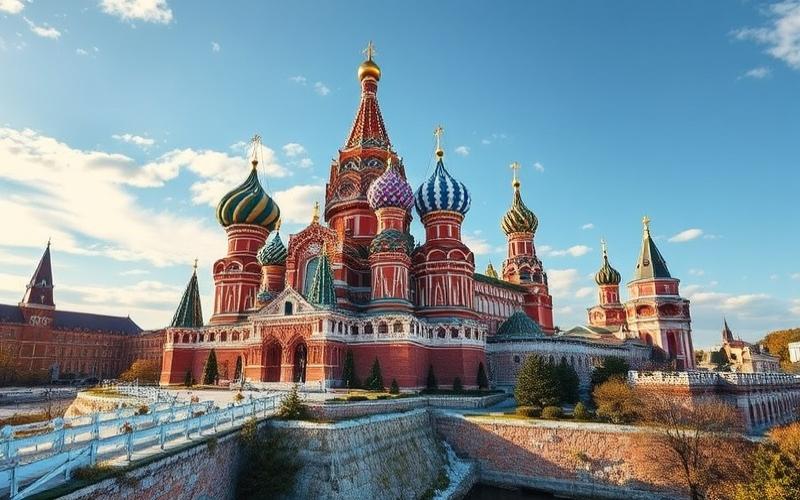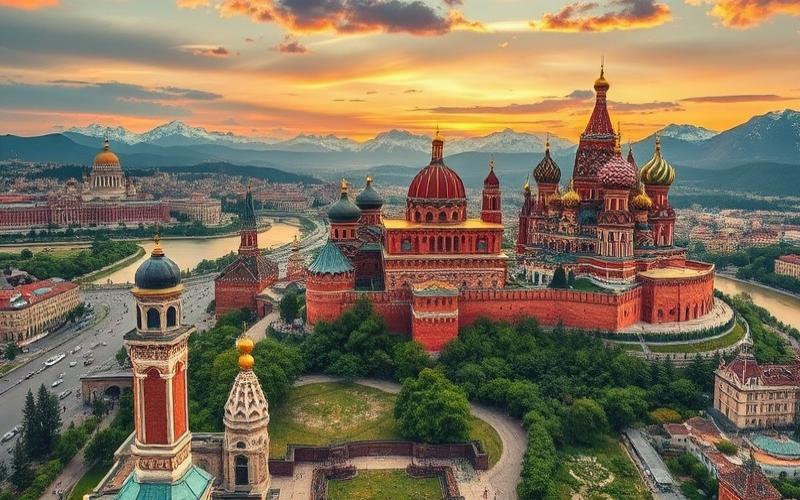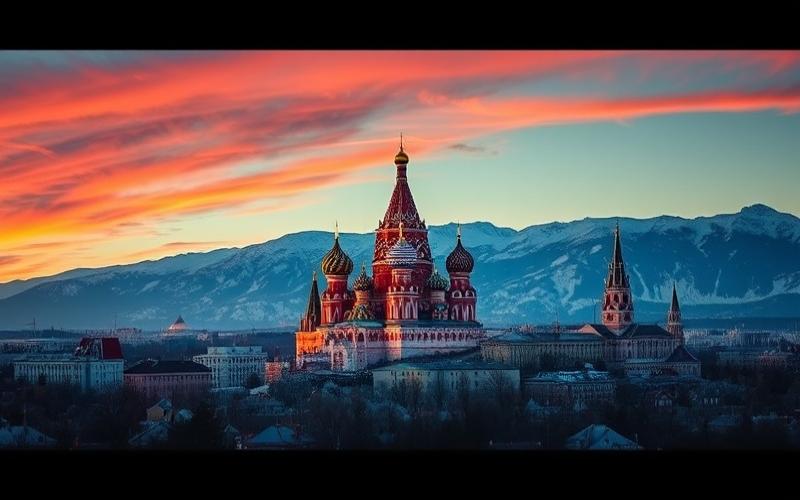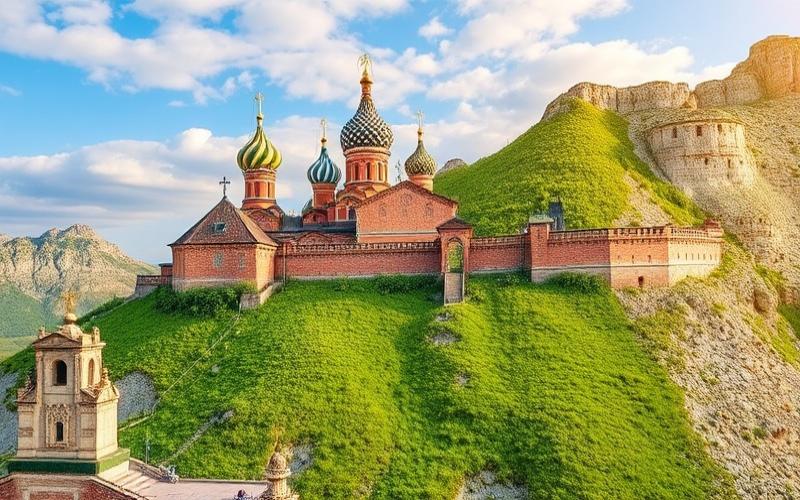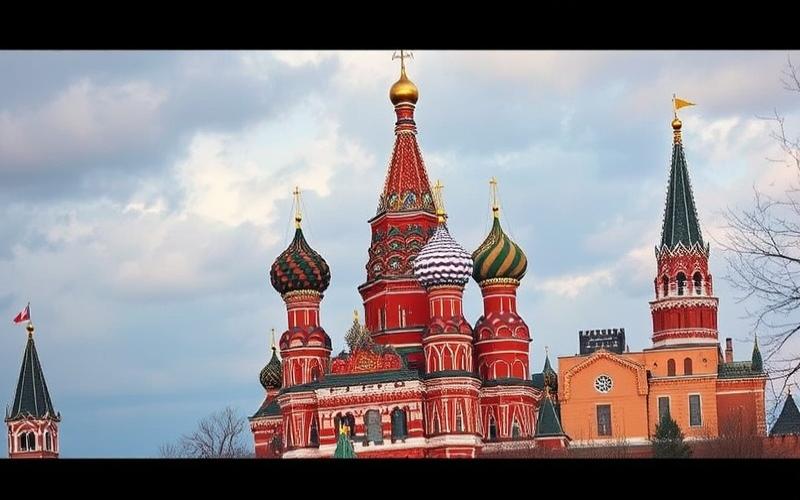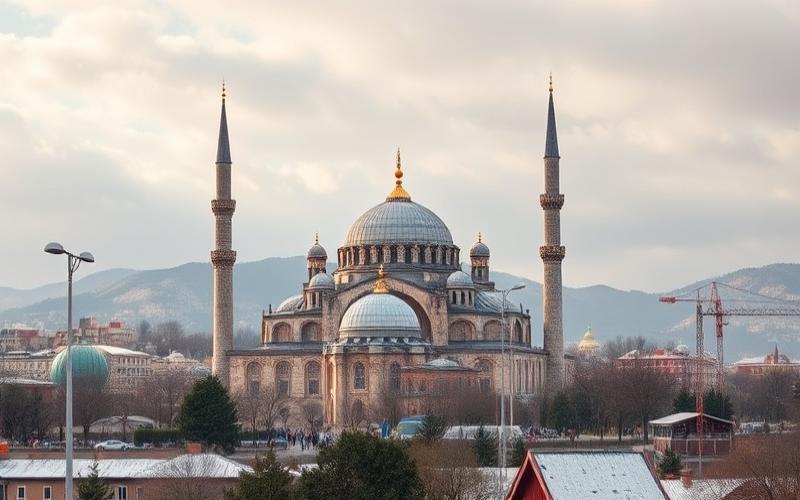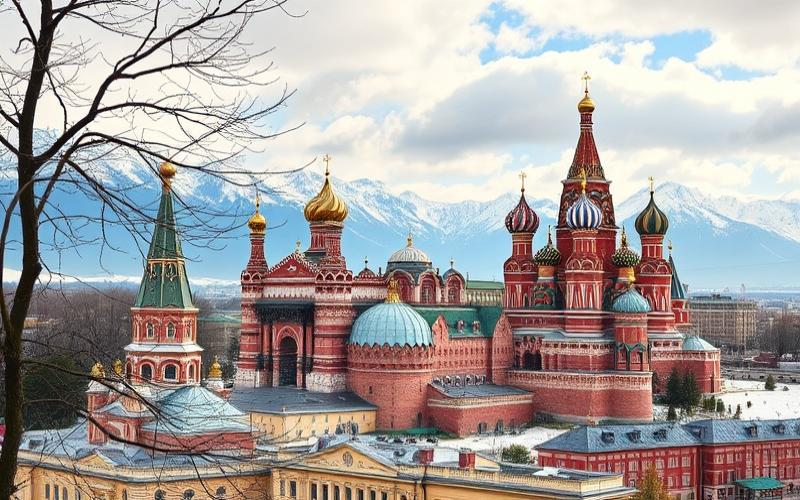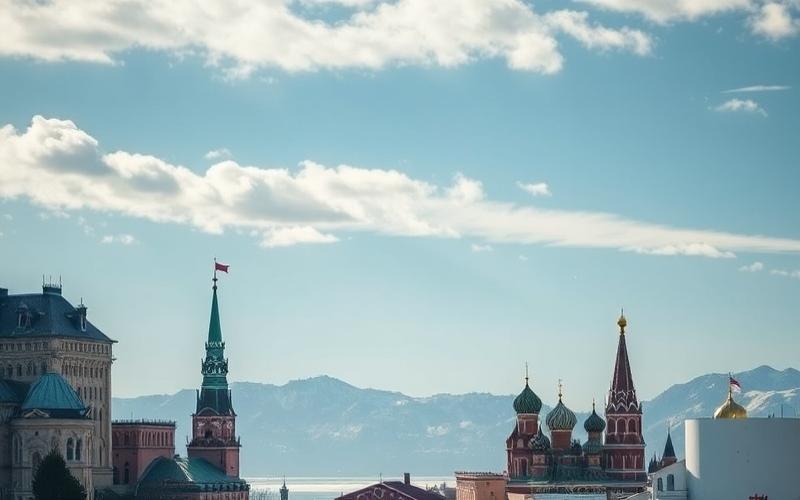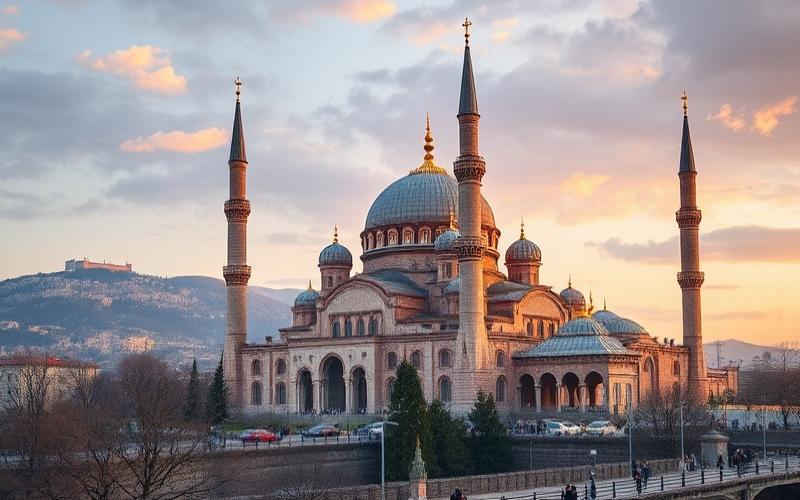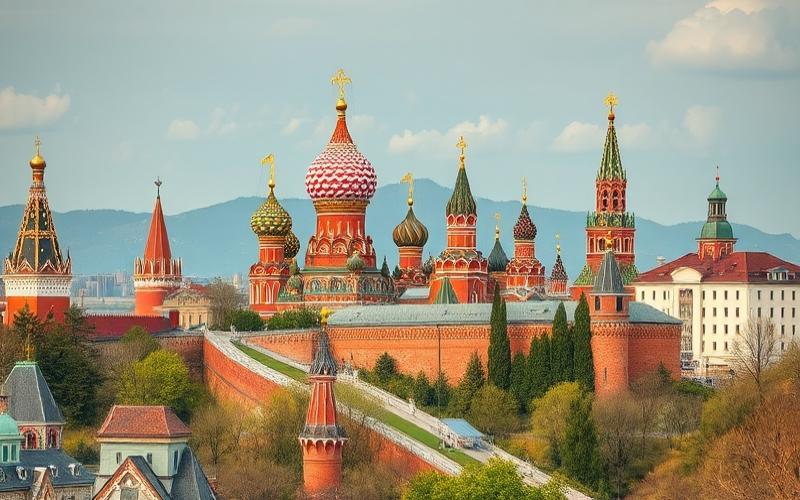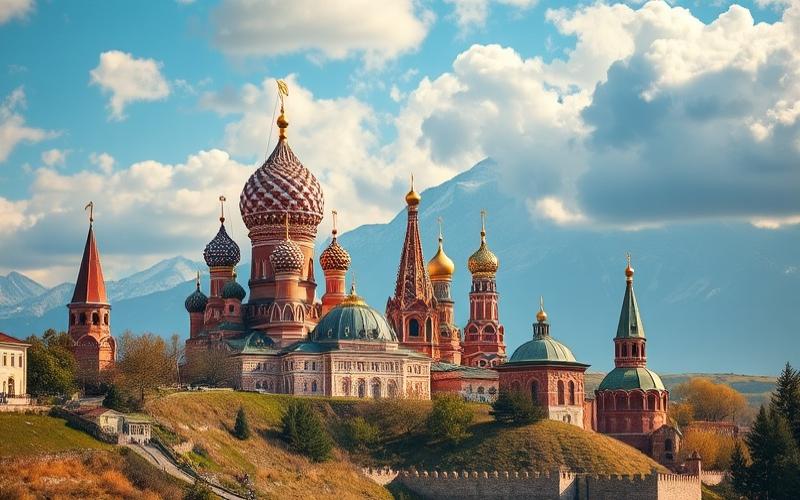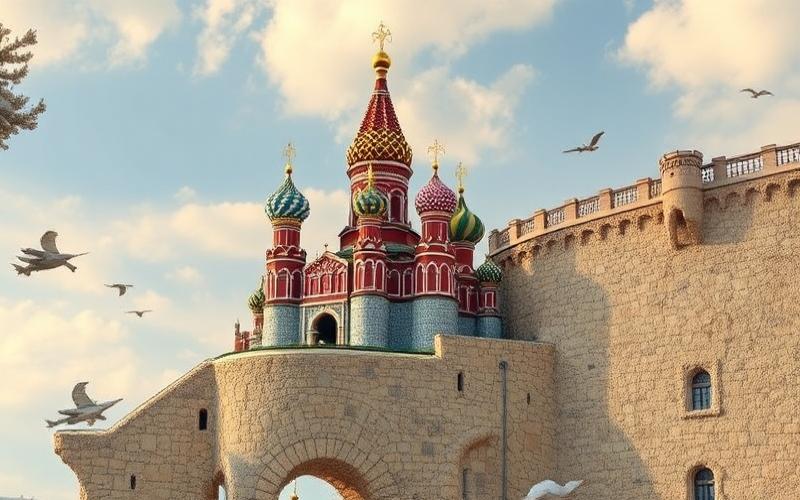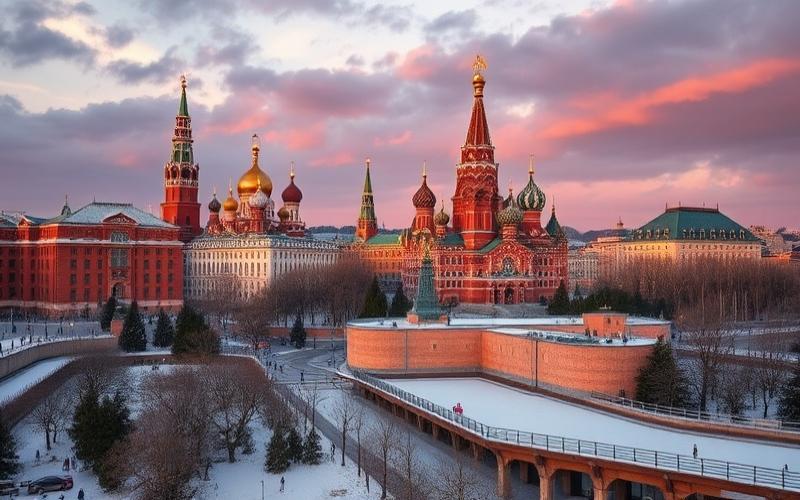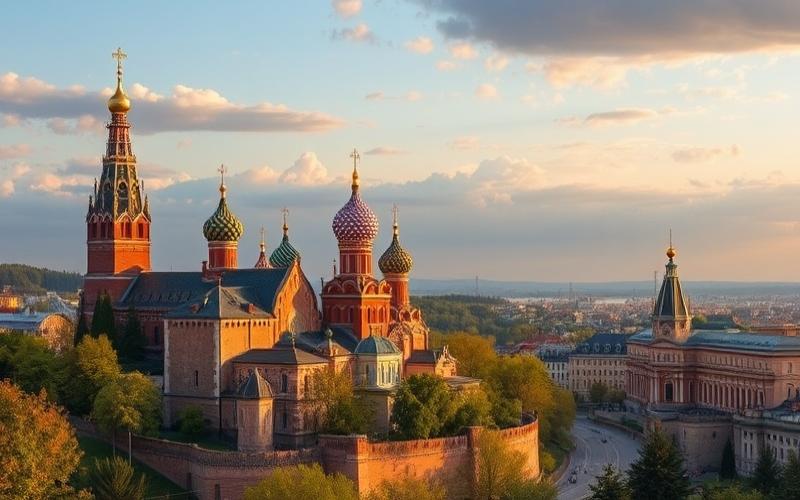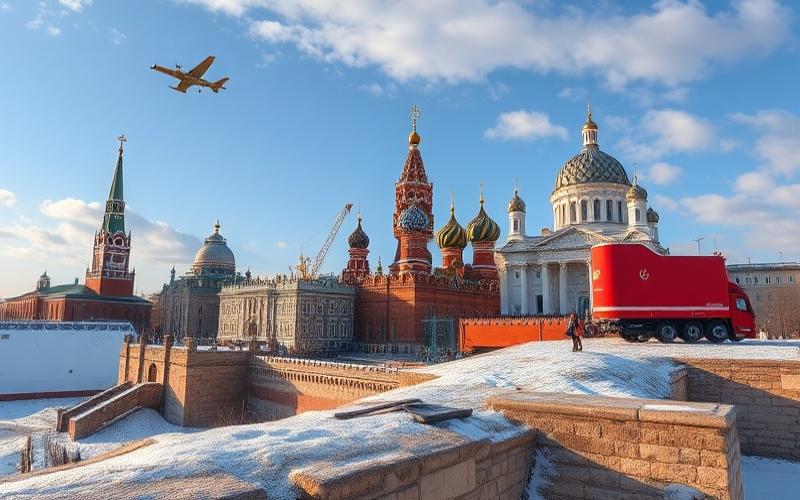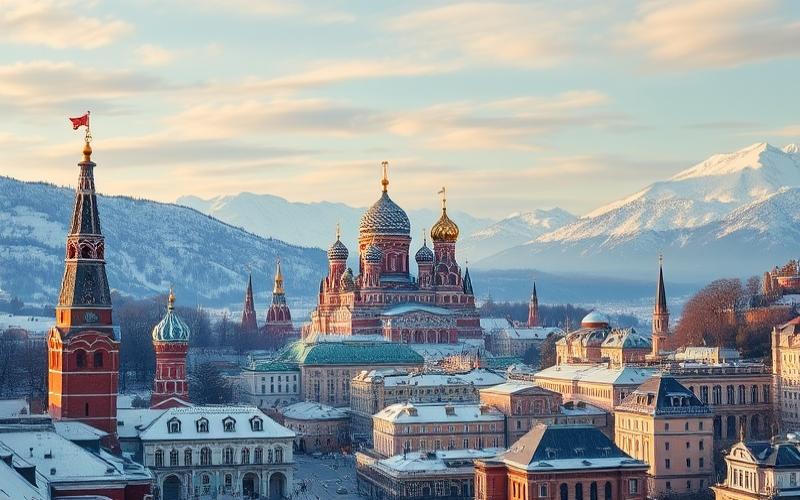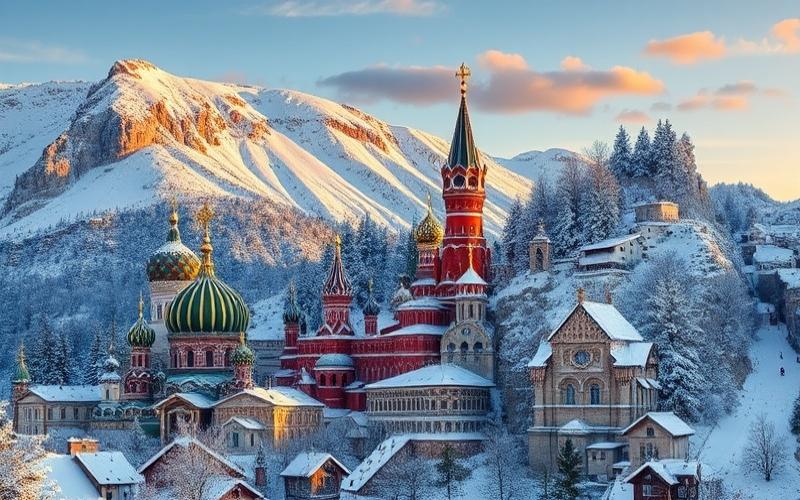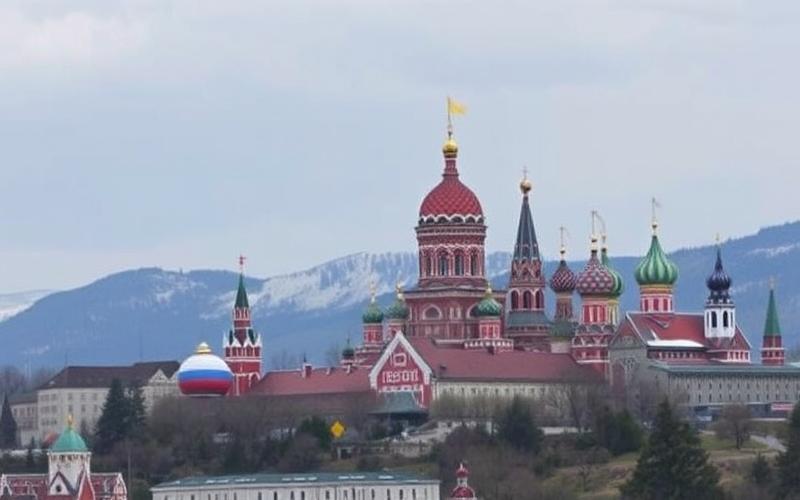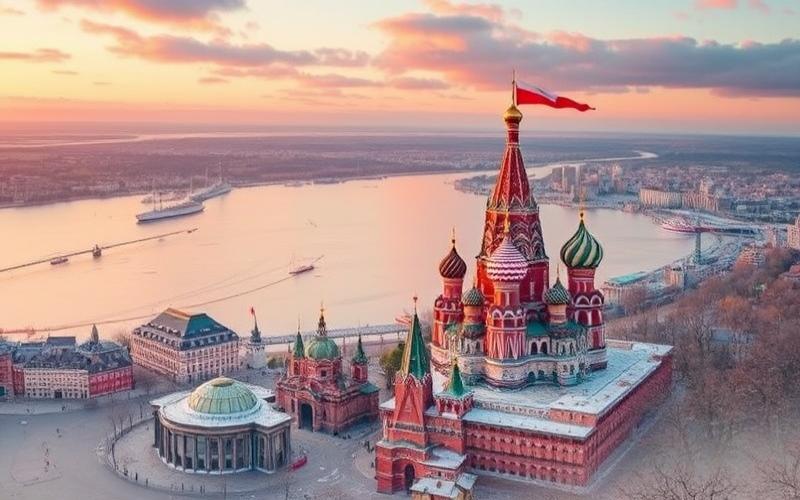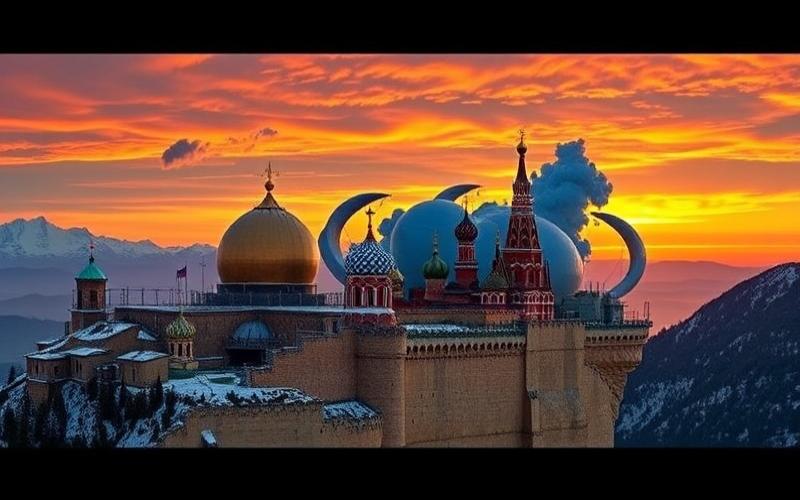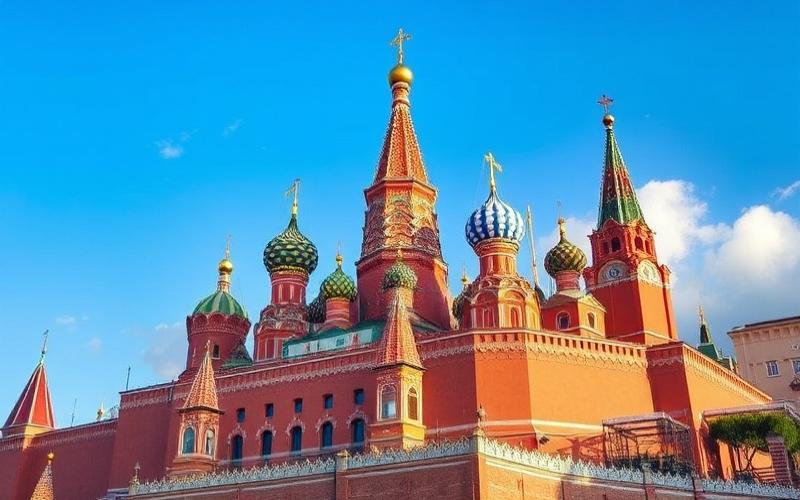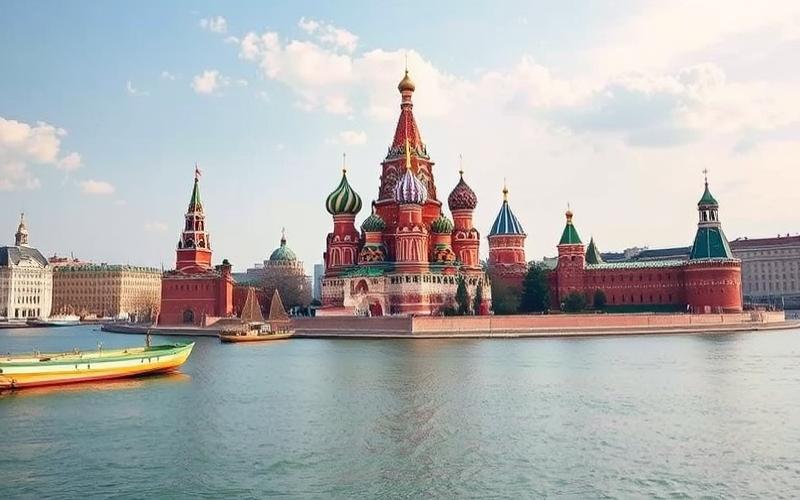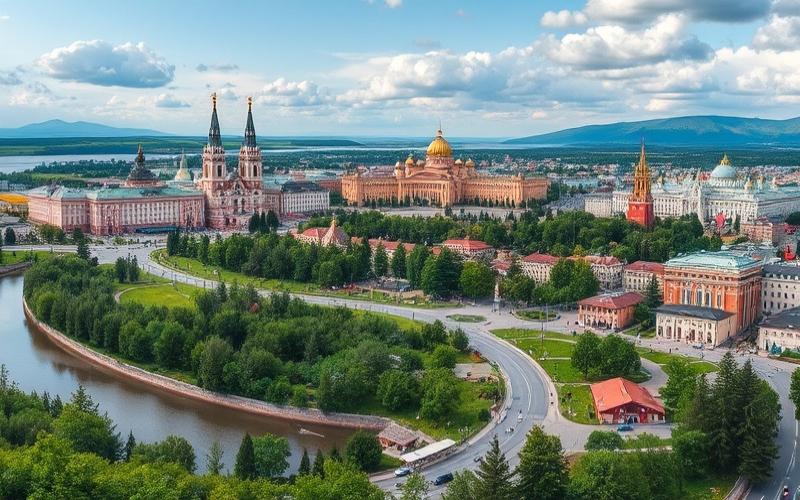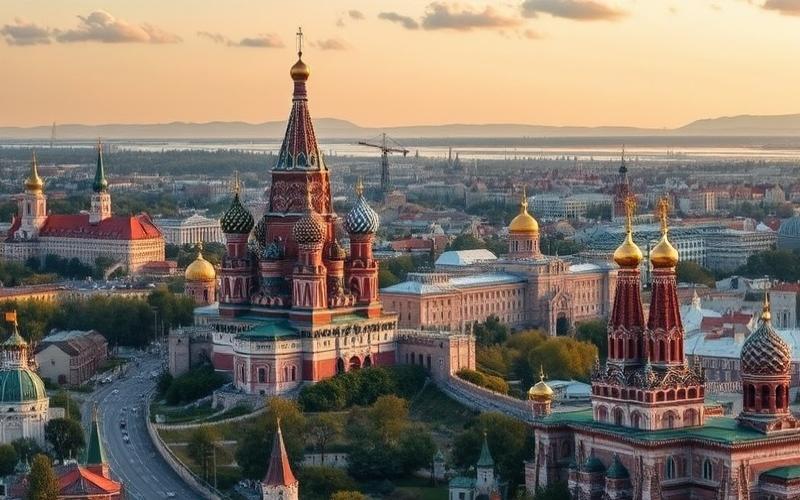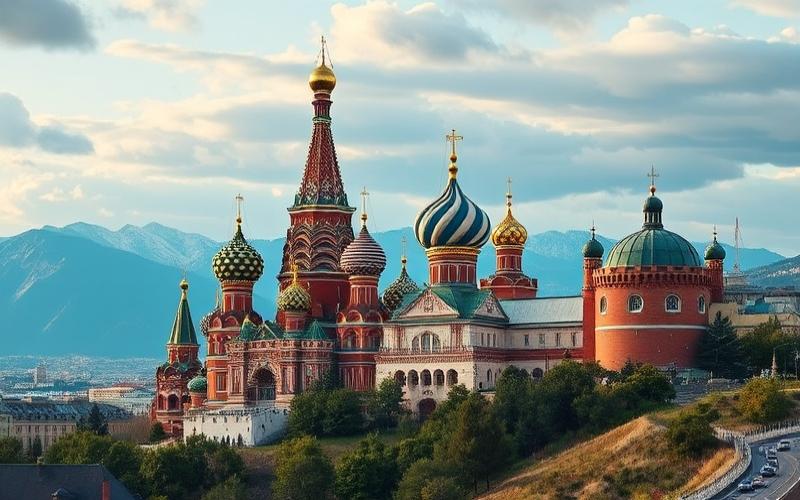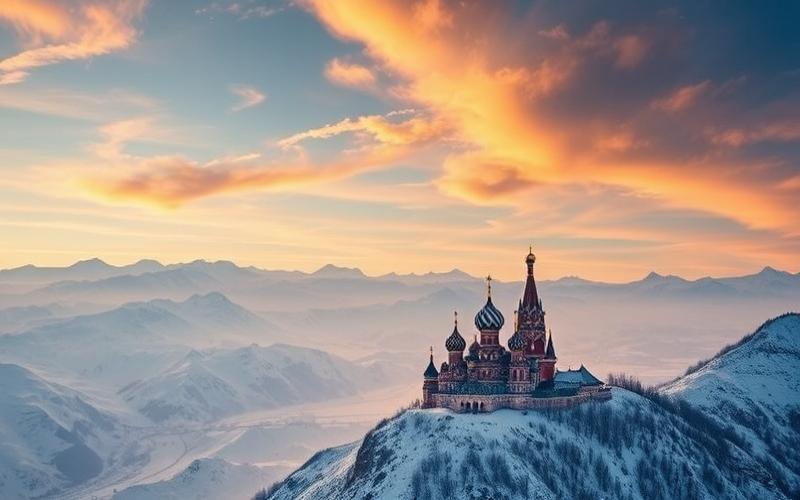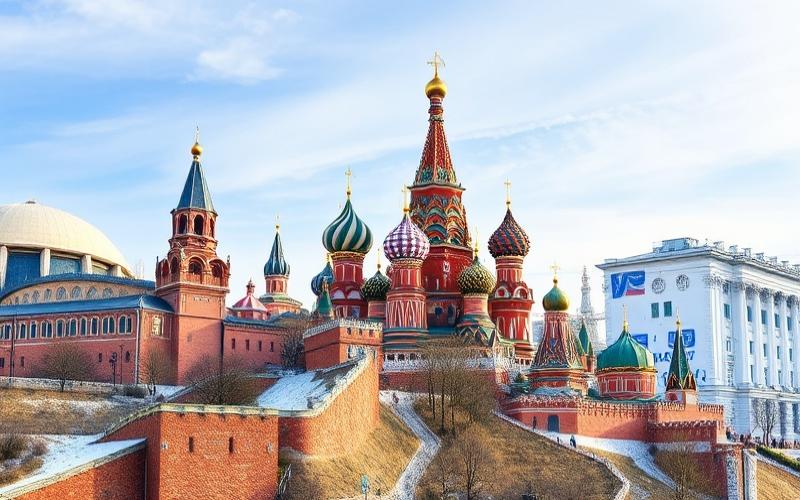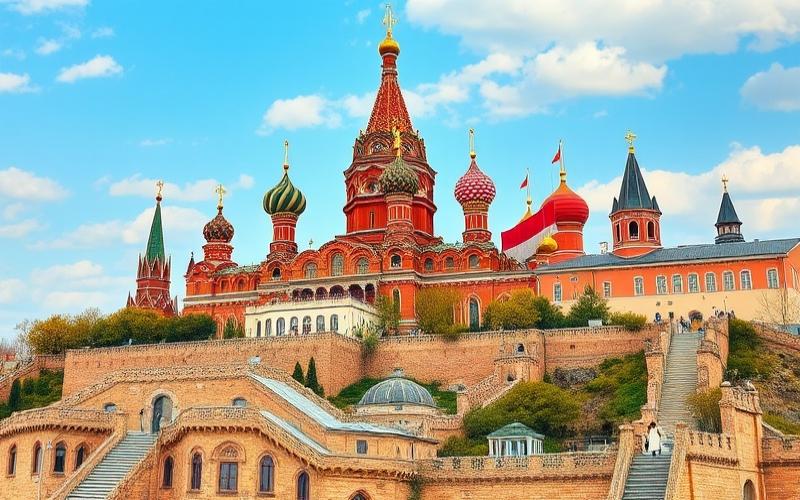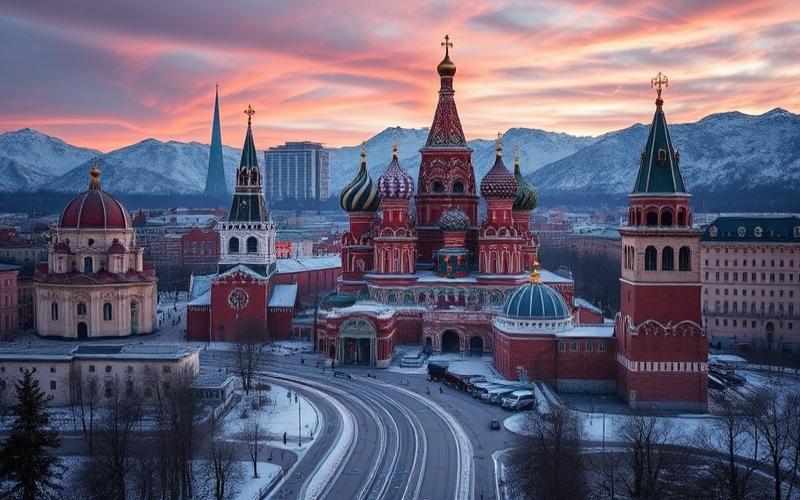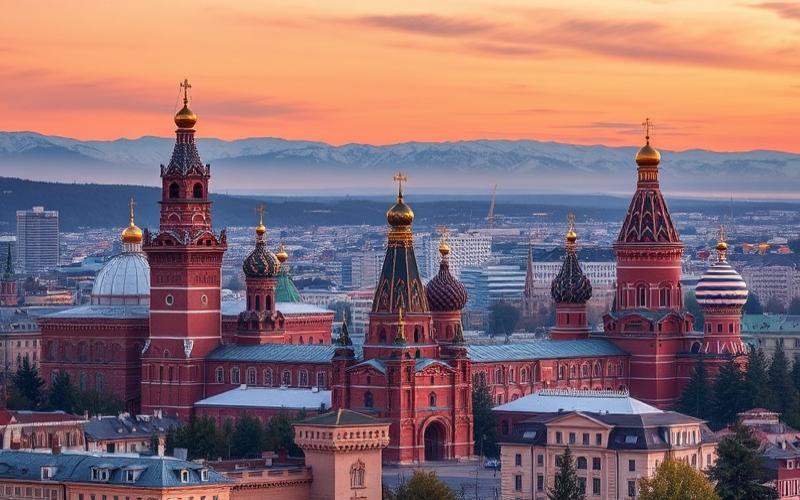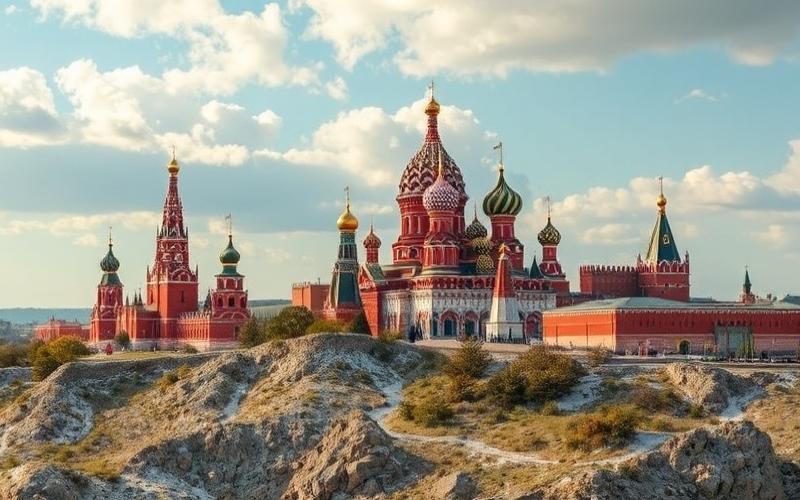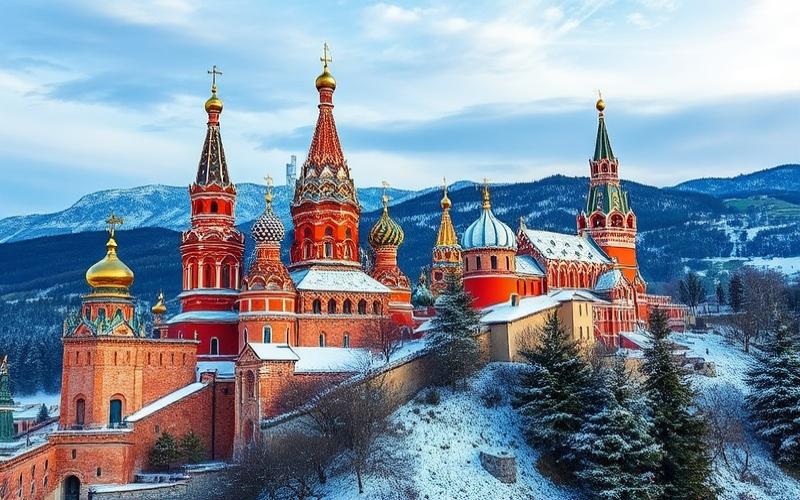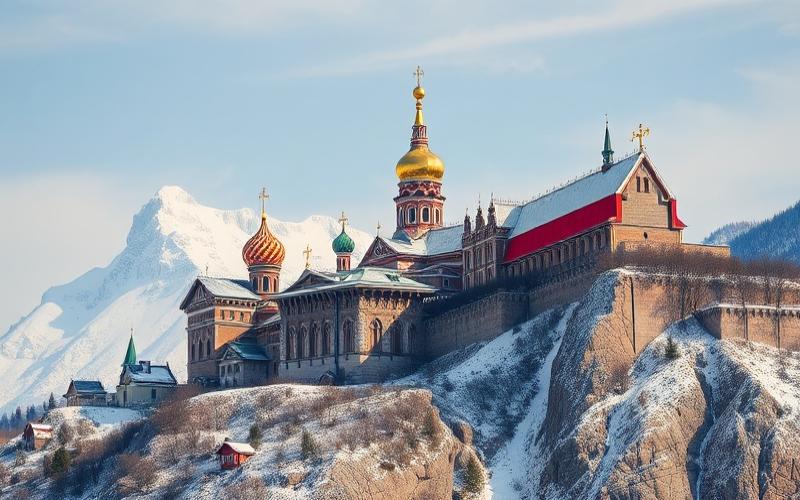
 Published on and written by Cyril Jarnias
Published on and written by Cyril Jarnias
Spanning over 17 million square kilometers, Russia is the world’s largest country, a territory of vast geographical contrasts and climates stretching from Eastern Europe to the far eastern tip of Asia.
From the icy tundra of Siberia to the Caucasus mountain ranges and the fertile plains of the west, each region possesses unique diversity with varied ecosystems and a rich cultural mosaic.
Russia is also traversed by major rivers like the Volga, Amur, and Yenisei, contributing to its ecological diversity and geopolitical importance.
By exploring the nuances of this incredible geographical diversity, one discovers not only the country’s natural beauty but also how it has shaped its history and development.
Russia’s Geographical Location
Russia
- Central latitude: approximately 61° N
- Central longitude: approximately 105° E
- Total area: 17,125,191 km², making it the world’s largest country
- Extension: 9,000 km from west to east, 3,000 km from north to south
- Position in Eurasia:
- 74.7% in North Asia
- 25.3% in Eastern Europe
- Crossed by the 180th meridian in the east
Land borders with 14 countries:
- Norway
- Finland
- Estonia
- Latvia
- Lithuania (Kaliningrad exclave)
- Poland (Kaliningrad)
- Belarus
- Ukraine
- Georgia
- Azerbaijan
- Kazakhstan
- China
- Mongolia
- North Korea
Coastlines:
- Arctic Ocean (north)
- Pacific Ocean (east)
- Baltic Sea (Kaliningrad)
- Black Sea
- Caspian Sea
- Sea of Okhotsk
- Barents Sea
- Bering Sea
Main Geographical Features:
| Type | Major Example(s) | Brief Description |
|---|---|---|
| Mountains | Caucasus, Ural, Altai, Sayan | Europe-Asia border (Ural), highest point: Elbrus (Caucasus, 5,642 m) |
| Plains | East European Plain, West Siberian Plain | Very extensive, favorable for agriculture and infrastructure |
| Rivers | Volga, Ob, Yenisei, Lena, Amur | Volga: longest in Europe, major rivers for transport and hydroelectricity |
Notable Geographical and Climate Facts:
- 91% of territory north of the 50th parallel
- 1/3 north of the Arctic Circle
- Great climate diversity:
- Tundra, taiga, mixed forests, steppe, semi-desert
- Two-thirds of the country: very harsh winters (January average)
Main Russian Regions
| Region | Location | Area (km²) | Population | Main Characteristics |
|---|---|---|---|---|
| Siberia | Central and Eastern Russia | ~13,100,000 | ~33 million | Very vast, extreme continental climate, low density, mineral wealth (oil, gas, coal), forests, ethnic diversity (Yakuts, Buryats). |
| Ural | Europe-Asia border | ~1,800,000 | ~12 million | Mountain range, abundant mineral resources (metals, coal), heavy industries, city of Yekaterinburg. |
| Russian Far East | Far East, Pacific coast | ~6,200,000 | ~8 million | Sparsely populated region, harsh climate, natural resources (gold, diamonds, timber), geopolitical issues, Vladivostok. |
| Volga Region | Central-West, around the Volga | ~1,360,000 | ~30 million | Industrial and agricultural heartland, major cities (Kazan, Nizhny Novgorod, Samara), ethnic diversity (Tatars, Chuvash), Volga River. |
| North Caucasus | Southwest, towards the Caucasus | ~170,000 | ~10 million | Mountains, ethnic mosaic (Chechens, Ossetians, Dagestanis), historical tensions, agriculture, hydrocarbons, natural sites. |
Siberia
- Extends from the Urals to the Far East.
- Subarctic to continental climate, large taiga forests, tundra in the north.
- Very rich in energy resources (Yamal gas field, Yugra oil).
- Challenges: isolation, underdeveloped infrastructure, rural exodus, very long and cold winters.
- Iconic sites: Lake Baikal (world’s largest freshwater reservoir), Yenisei River.
Ural
- Natural border between Europe and Asia.
- Historical industrial region since the Russian Empire, then strategic hub of the USSR.
- Metallurgy, coal and mineral extraction (iron, copper, platinum).
- Main city: Yekaterinburg, industrial and logistics crossroads.
- Challenges: pollution, industrial reconversion, aging population.
Russian Far East
- From Siberia to the Pacific Ocean, up to Vladivostok.
- Very low population density, but strategic importance (proximity to China, Korea, Japan).
- Natural wealth: forests, fish, diamonds, gold, gas.
- Challenges: remoteness from major centers, youth exodus, historical border tensions.
- Sites: Sakhalin Island, Kuril Islands, Sikhote-Alin Nature Reserve.
Volga Region
- Major axis of European Russia, the Volga is the longest river in Europe.
- Agricultural zone (wheat, sunflower), industrial (automotive, chemicals, energy).
- Strong ethnic diversity, notably the Republic of Tatarstan (capital Kazan).
- Cultural sites: Kazan Kremlin, Samara (space industry), Nizhny Novgorod (architecture).
- Challenges: Volga pollution, development inequalities.
North Caucasus
- Mountainous region between the Black Sea and the Caspian Sea.
- Strong ethnic and religious diversity (Chechens, Dagestanis, Ossetians, Ingush).
- History of conflicts (Chechen wars, interethnic tensions).
- Agriculture (vineyards, cereals), hydrocarbons (Dagestan oil), mountain tourism (Elbrus, highest peak in Europe).
- Challenges: political instability, poverty, emigration.
Major Historical Aspects
- Siberia: Russian conquest from 16th to 19th century, exile and gulag in the Soviet era.
- Ural: accelerated industrialization under Stalin, key role during World War II.
- Far East: late colonization, rivalries with China and Japan.
- Volga: crossroads of civilizations (Tatars, Russians, Finno-Ugric peoples), Soviet industrial development.
- North Caucasus: long resistance to Russian conquest (19th century), post-Soviet conflicts.
Common Economic and Social Challenges
- Development imbalance between Moscow/St. Petersburg and the rest of the country.
- Demographic aging, rural exodus.
- Local governance problems, corruption, low economic diversification.
- Need for investments in infrastructure and education.
Iconic Natural and Cultural Sites
- Lake Baikal (Siberia)
- Mount Elbrus (Caucasus)
- Kazan Kremlin (Volga)
- Sikhote-Alin Reserve (Far East)
- Ural Monasteries
Russia, a mosaic of regions, combines vastness, cultural diversity, and major contemporary challenges.
Good to know:
Siberia, covering about 77% of Russian territory, is rich in natural resources like oil and gas, but the harsh climate poses challenges to its economic development. Despite its cultural and historical diversity, the North Caucasus is marked by persistent political and economic instability.
Major Metropolises and Cities
Moscow is the capital and largest city of Russia, with over 12 million inhabitants. It is the main economic, political, and cultural center of the country, concentrating a major share of Russian GDP and housing the headquarters of large companies, financial institutions, as well as numerous museums, theaters, and universities. Moscow is also the main hub of the Russian transport network, with major railway stations, three international airports, and the busiest metro in Europe. Urban challenges are numerous: chronic traffic congestion, air pollution, and pressure on the housing market. Among recent projects: the development of Greater Moscow, metro extension, urban renovation, and creation of new green spaces.
St. Petersburg, Russia’s second city with about 5.4 million inhabitants, is a major historical center, nicknamed the “Venice of the North.” It has exceptional architectural heritage (Hermitage Museum, palaces, canals) and plays a key role in Russian culture. St. Petersburg is also an important port on the Baltic and an industrial center in shipbuilding, electronics, and chemicals. It suffers from severe urban congestion, water pollution, and aging housing stock. Recent projects aim to modernize transport infrastructure (metro extension, new tram lines) and rehabilitate historic neighborhoods.
Novosibirsk is the largest city in Siberia (nearly 1.6 million inhabitants), known as a leading industrial, scientific, and educational center. It houses Novosibirsk State University and numerous research institutes, as well as a diversified industrial sector (mechanical engineering, energy, chemicals). Novosibirsk is a strategic railway hub on the Trans-Siberian line, facilitating trade between Europe and Asia. The city experiences sustained urban growth but faces challenges such as lack of modern infrastructure and air pollution. Recent initiatives include renovation of the Ob River banks and development of modern residential neighborhoods.
Yekaterinburg, in the Urals, has about 1.5 million inhabitants. It is a major industrial hub (metallurgy, machine tools, IT), an important logistics center at the crossroads of Europe and Asia, and a dynamic university city (Ural Federal University). Yekaterinburg plays an essential role in the Russian rail and air transport network. The main urban challenges concern infrastructure modernization, industrial pollution management, and rehabilitation of peripheral neighborhoods. Recent projects focus on expansion of innovation zones, downtown renovation, and improvement of public transport networks.
Nizhny Novgorod (about 1.3 million inhabitants) is located at the confluence of the Volga and Oka rivers. It has historical importance as a former commercial showcase of the Russian Empire and industrial center (automotive manufacturing, metallurgy, chemicals). Nizhny Novgorod is also a crossroads of river and railway transport networks. The city faces similar urban challenges: aging buildings, congestion, and pollution. The 2018 FIFA World Cup enabled the construction of a new stadium and modernization of several urban infrastructures, as well as projects to revitalize the historic center.
| City | Population (2025, estimated) | Economic Importance | Historical and Cultural Role | Transport Network | Key Industries | Urban Challenges | Recent or Future Projects |
|---|---|---|---|---|---|---|---|
| Moscow | >12 million | Financial center, corporate headquarters, services | Capital, museums, universities, heritage | Metro, stations, airports | Finance, services, tech | Congestion, pollution, housing | Greater Moscow, metro extension, urban renovation |
| St. Petersburg | ~5.4 million | Port, industry, tourism | Imperial history, museums, heritage | Metro, port, trams | Shipbuilding, chemicals | Congestion, pollution, old housing stock | Metro extension, historic neighborhood rehabilitation |
| Novosibirsk | ~1.6 million | Industry, research, education | Scientific center, universities | Trans-Siberian, airport | Mechanical engineering, energy, chemicals | Infrastructure, pollution | Riverbank renovation, new residential neighborhoods |
| Yekaterinburg | ~1.5 million | Industry, innovation, logistics | University city, regional culture | Rail, airport, highways | Metallurgy, IT, machinery | Modernization, industrial pollution | Innovation zones, public transport improvements |
| Nizhny Novgorod | ~1.3 million | Industry, commerce, transport | Historic fair, industrial center | River, railway | Automotive, chemicals, metallurgy | Aging, congestion, pollution | 2018 stadium, center revitalization, network modernization |
Common Urban Challenges
- Traffic congestion and public transport saturation
- Air and water pollution
- Insufficient or dilapidated housing
- Need for modernization of infrastructure and public spaces
Examples of Improvement Projects
- Development of eco-friendly neighborhoods in Moscow and St. Petersburg
- Extension of metro and tram networks
- Modernization of water treatment plants and water networks
- Creation of new recreational areas and urban parks
- Initiatives to promote innovation and economic diversification (tech clusters, incubators)
Good to know:
Moscow, as an economic center, faces pollution problems, while St. Petersburg stands out for its rich cultural heritage; recent infrastructure projects in Novosibirsk and Yekaterinburg seek to improve urban mobility and quality of life.
Borders and Neighboring Countries
Total length of Russia’s borders:
- Land borders: approximately 20,622 km to 22,125 km, depending on sources.
- Maritime borders: approximately 38,807 km to 40,000 km.
- Total length (land + maritime): around 60,932 km, the longest border in the world.
Neighboring countries and approximate length of land borders (in kilometers):
| Country | Approx. Length |
|---|---|
| Kazakhstan | 6,846 |
| China | >4,200 |
| Mongolia | 3,485 |
| Ukraine | 1,576 |
| Finland | 1,340 |
| Belarus | 959 |
| Georgia | 723 |
| Estonia | 323–723* |
| Azerbaijan | 284 |
| Lithuania | 284 |
| Latvia | 232 |
| Poland | 217 |
| Norway | 196 |
| North Korea | 19 |
*Discrepancies exist for Estonia depending on sources.
Specificities and Distinctive Geographical Aspects
- Russia has the most land neighbors in Eurasia.
- It possesses an exclave, Kaliningrad, between Poland and Lithuania, creating two non-contiguous borders with these countries.
- Some border sections follow major rivers (e.g., Amur with China) or cross very sparsely populated or inhospitable areas like the Arctic tundra or Siberian mountains.
Maritime Fronts – Seas and Oceans Bordering Russia
- Arctic Ocean to the north (Barents Sea, White Sea…)
- Pacific Ocean to the east (Sea of Okhotsk, Sea of Japan)
- Caspian Sea to the south
- Black Sea to the southwest
- Baltic Sea to the west
The Russian coastline is very long but often difficult to access due to extreme climate and long periods of sea ice in the Arctic.
Geopolitical Nature of Russian Borders – Historical & Economic Facts
Non-exhaustive list of significant aspects:
- Many neighbors are former Soviet republics; after the dissolution of the USSR in 1991, several border disputes emerged along with persistent tensions with some Western countries like Ukraine or the Baltic states.
- The vast distances and weak control over certain areas reinforce Russian security concerns. This has historically led to a strategic interest in maintaining a “defensive depth” against European/Asian powers.
- Trade exchanges are significant with some neighbors like China (growing energy cooperation), while with other European states they can be strained due to international sanctions or recent political conflicts.
- The eastern border provides access to dynamic Asian markets but remains economically underutilized compared to traditional European routes.
- Kaliningrad constitutes a major geopolitical specificity as it is an exclave completely isolated from the main Russian territory by several EU and NATO members; its militarization is regularly a source of regional tensions.
Unique Aspects in Russian Geographical Division
- The continuous land border between two continents means Moscow exerts influence both over Europe and a large part of Northeast Asia.
- Some nearby islands even allow close contact with the United States via the Bering Strait (Diomede Islands).
- The border layout has sometimes evolved following various historical treaties; for example, the one signed with China in recent years allowed partial easing after several decades of disputes around the Amur River.
Good to know:
Russia shares approximately 20,241 km of land borders with 14 countries, the longest being with Kazakhstan (7,512 km) and China (4,209 km), and it is bordered by the Arctic Ocean to the north and the Pacific Ocean to the east, which strongly influences its geopolitical issues.
Disclaimer: The information provided on this website is for informational purposes only and does not constitute financial, legal, or professional advice. We encourage you to consult qualified experts before making any investment, real estate, or expatriation decisions. Although we strive to maintain up-to-date and accurate information, we do not guarantee the completeness, accuracy, or timeliness of the proposed content. As investment and expatriation involve risks, we disclaim any liability for potential losses or damages arising from the use of this site. Your use of this site confirms your acceptance of these terms and your understanding of the associated risks.


